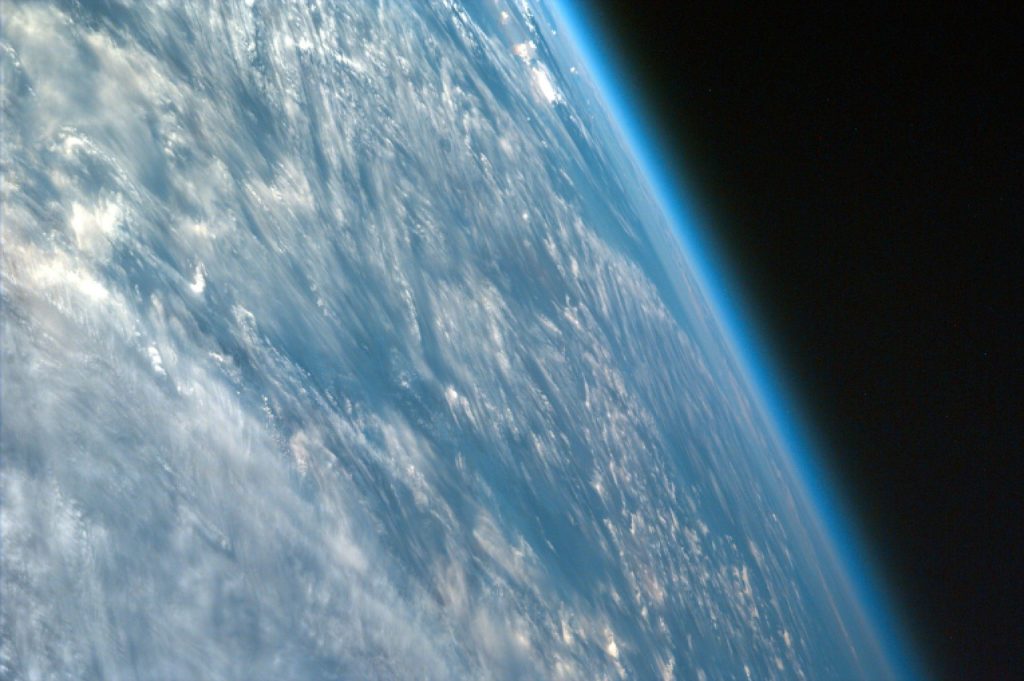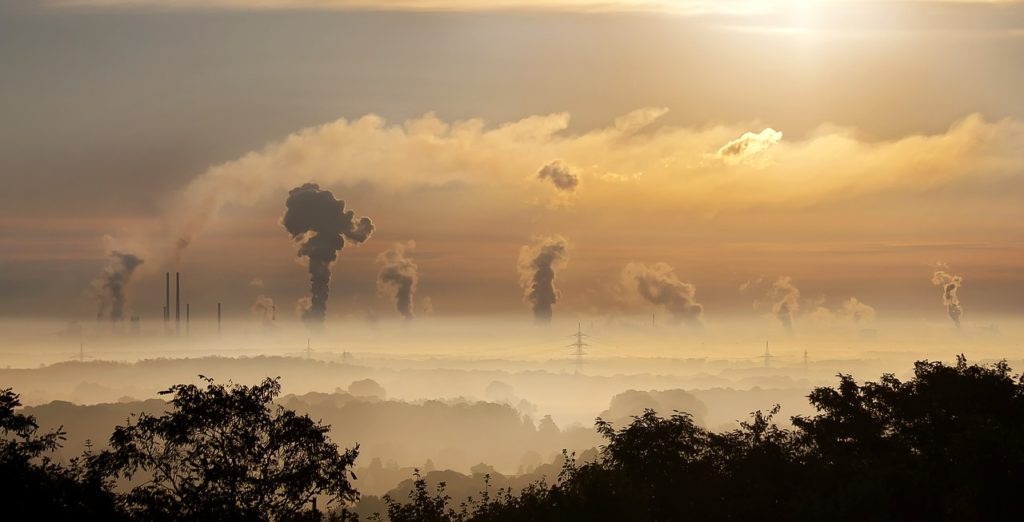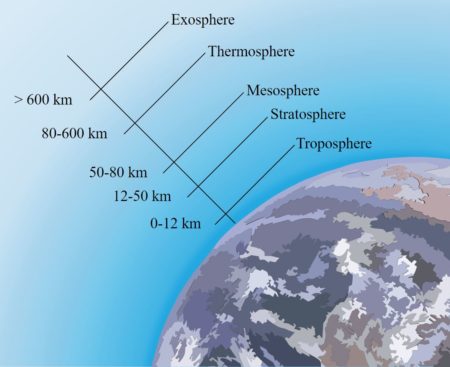Earth Day 2020: Our planet’s atmosphere
by Ailsa Harvey · 22/04/2020
It’s all around us, but how much do we know about Earth's atmosphere?

(Image source: Pixabay)
Our atmosphere (made up of 78 per cent nitrogen and 21 per cent oxygen, with other gases making up the last per cent) is held in place by gravity and consists of a number of different layers that work together to protect us from solar radiation and to keep consistent temperatures. The atmosphere gets thinner with altitude, with 80 per cent of its mass in the first layer closest to the Earth’s surface.
There are five main layers that make up the atmosphere. The troposphere is the first layer (and is where our weather occurs), followed by the stratosphere, mesosphere, thermosphere and exosphere. There is no definite boundary between where the atmosphere ends and outer space begins, though the Kàrmàn line at 100km above sea level is often regarded as a the boundary.
There are other layers that exist alongside the five main layers. The lowest of these is the ‘planetary boundary’, which is within the troposphere and closest to the Earth’s surface and its depth can vary widely between 100m to 3,000m as it is directly affected by conditions on the surface. The ozone layer is the one that most of us will be familiar with and this is contained within the stratosphere, in its lower portion. Around 90 per cent of the ozone in the atmosphere lies here. The ionosphere is what causes auroras, such as the northern lights, as it is ionised by solar radiation and stretches from 50 to 1,000km, overlapping the exosphere and thermosphere.
Finally, the homosphere and the heterosphere run from the Earth’s surface to around 80km and from 80km upwards respectively. They are so-named because of the way the gases within them are mixed. The heterosphere has a chemical composition that changes with height, whereas the homosphere’s make-up remains more constant. The five main layers are based on the thermal structure of the atmosphere, whereas the additional layers mentioned here are classified according to composition.
(Image credit: William Crochot)
Layer breakdown
1. Troposphere
The first layer of atmosphere, starting at the Earth's surface and extending to between 7km and 17km. It is heated by a transfer of energy from the Earth's surface, so it gets cooler as it goes higher.
2. Statosphere
Starts from the tropopause (the boundary between the first two layers) up to around 51km, with temperatures increasing with height. This is where you'll find things like weather balloons.
3. Mesosphere
Extends from the stratosphere (again, the layer bounday) to a height of 80-85 km and is notably the layer in which meteors burn up when entering the atmosphere. Temperatures decrease with height, and in the mesopause is the coldest place on Earth (around -100 °C).
4. Thermosphere
Temperatures start to increase with height. This is also the layer in which the International Space Station orbits, between 320 and 380km, and shuttles fly into. It extends up to the base of the exosphere, called the exobase.
5. Exosphere
The final layer where particles are widely spaced and can travel hundreds of kilometres before colliding with another particle. The makeup of this layer is mainly hydrogen and helium.
How does pollution affect the atmosphere?

The effects of pollution include smog, acid rain, the greenhouse effect, and holes in the ozone layer. Each
problem has implications for both our health and the environment. The carbon dioxide gas produced when fuel is burned may contribute to the greenhouse effect.
Plants can convert CO2 back to oxygen, but the human production of Co2 currently exceeds the amount the plants can convert back. Rife in cities, smog is the result of smoke, fog, and chemical fumes caused when different pollutants combine. Acid rain occurs when a pollutant, such as sulfuric acid combines with droplets of water in the precipitation and becomes acidified.
(Image source: Pixabay)
This article was originally published in How It Works issue 6,
For more science and technology articles, pick up the latest copy of How It Works from all good retailers or from our website now. If you have a tablet or smartphone, you can also download the digital version onto your iOS or Android device. To make sure you never miss an issue of How It Works magazine, subscribe today!





